The Dell Venue 10 7040 Review
by Brandon Chester on June 30, 2015 8:00 AM ESTGPU Performance
GPU performance is another important aspect of a device. The GPUs in phones and tablets are anywhere between 100 and 200 times faster than they were five years ago, and this has enabled continuous increases in display resolutions and complex applications that were previously not possible. Intel's HD graphics are not typically associated with powerful GPU performance. However, one of the ways Intel's Moorefield chips are different from Bay Trail is that they use PowerVR graphics. In the case of the Venue 8, it uses the PowerVR G6430 with a peak frequency of 533MHz. This is the same GPU found in Apple's A7 SoC, although Apple's implementation is running somewhere around 450MHz.
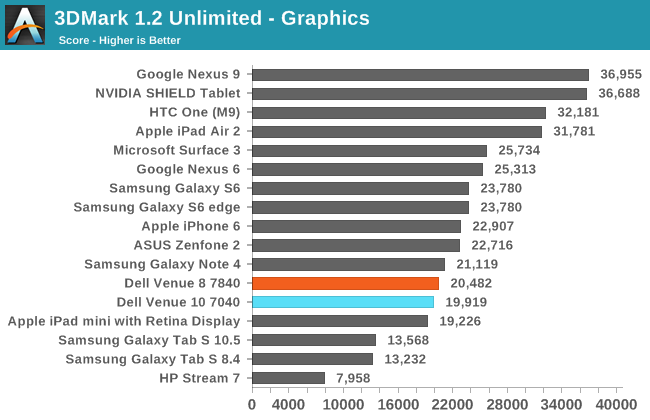
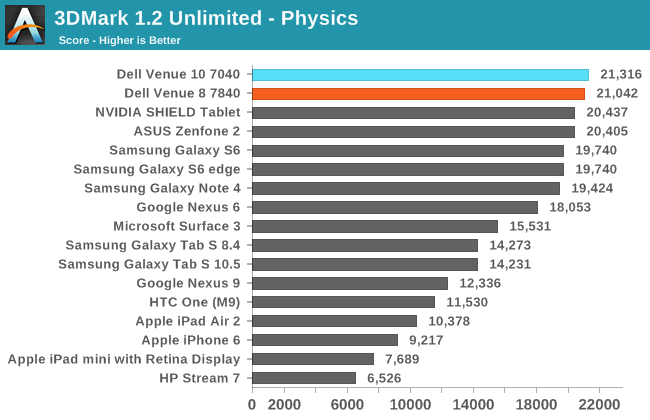
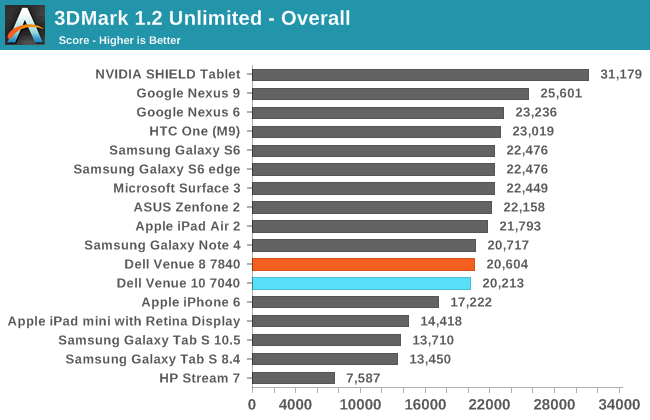
3DMark performance on the Venue 10 is basically identical to the Venue 8. The small difference is most certainly just test variance. As far as the actual performance goes, the performance of the CPU leads to the highest score we've seen in the physics test. In the graphics test it's made clear that G6430 is not competitive with Apple's 8 core "GXA6850" or NVIDIA's single SMX Kepler GPU in Tegra K1. Again, this was easier to overlook when the device in question was a $200 ZenFone, but when you're selling tablets that cost $400-500 or more you can't lag this far behind the competition.
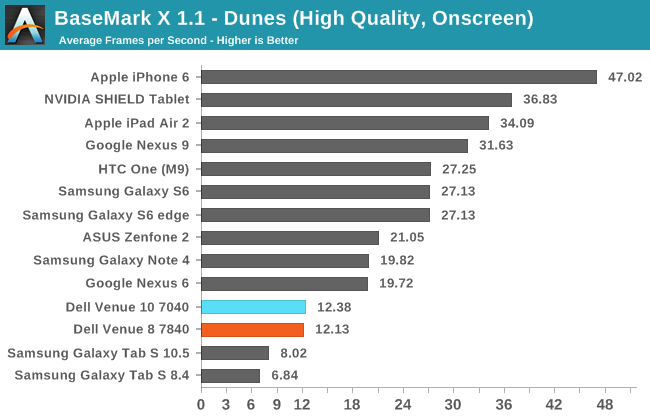
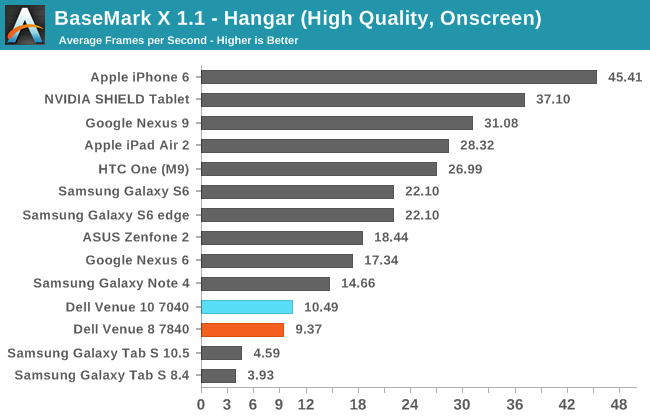

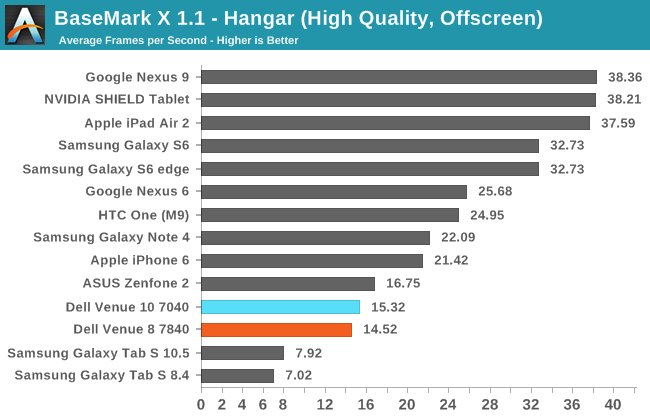

BaseMark X paints a similar picture to 3DMark. In the onscreen tests the performance of the Venue 10 ends up falling behind the ZenFone 2, which is understandable considering that the Venue 10 has twice as many pixels to power. In the 1080p offscreen tests all the G6430 devices have roughly the same performance, and unfortunately they're much slower than competing tablets.
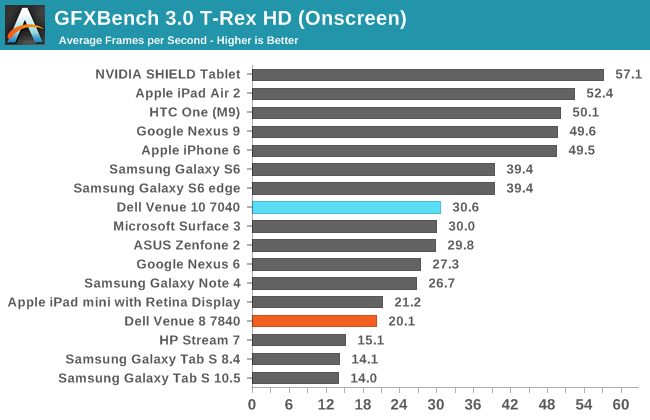
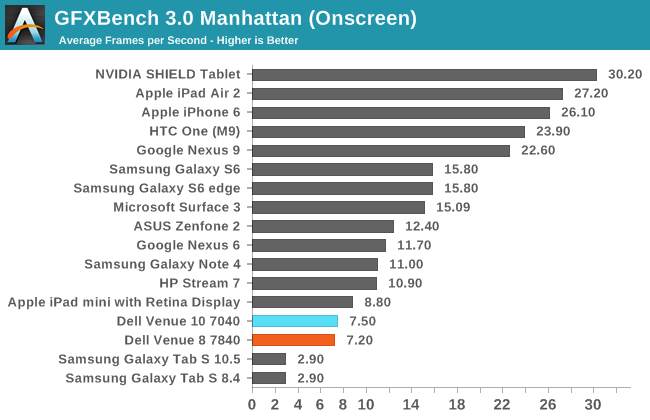

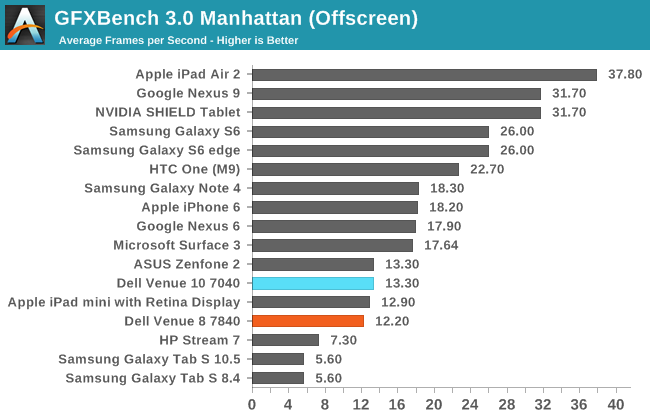
The last GPU test is GFXBench 3.0, and the results reflect the same level of performance as shown in Basemark X and 3DMark. Both Venue 8 tablets perform identically, and both are around the same performance as devices with Apple's A7 SoC.
When evaluating the Venue 10's GPU performance on its own, it performs decently. However, Apple's A8X and both versions of Tegra K1 perform between two and three times faster depending on the test. You can even get Tegra K1 in tablets that cost only $200-300 with the Xiaomi Mi Pad or the NVIDIA Shield Tablet, which makes the Venue 10's performance seem even more underwhelming considering its $499 price tag. G6430 was top notch when it first showed up in Apple's A7 chip, but after almost two generations of improvements since that time it is no longer a competitive GPU in the high end tablet market where devices cost $500 or more.
NAND Performance
Since mobile device manufacturers don't advertise anything about their storage beyond the capacity, it's difficult to find out about a device's storage performance without testing it yourself or reading a review. However, the speed of a device's NAND can significantly impact performance. Slow memory can bottleneck system performance when there are heavy reads or writes occurring, which occurs more often than one would think due to background applications and tasks like automatically downloading and installing app updates.
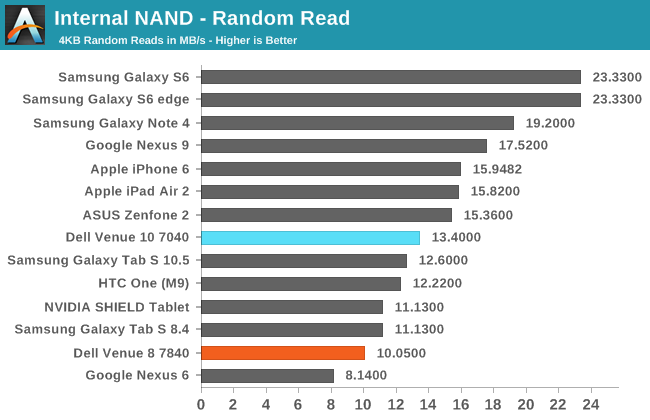

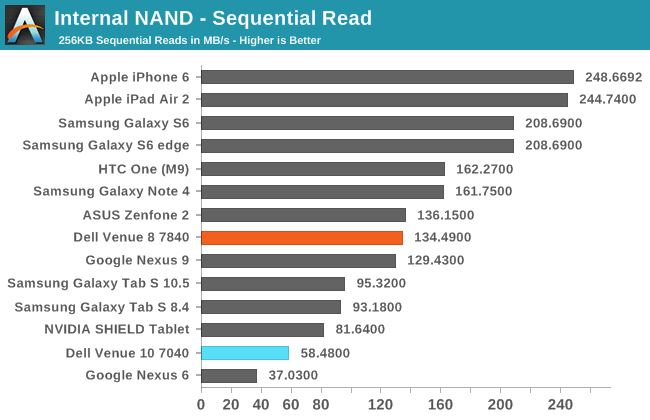
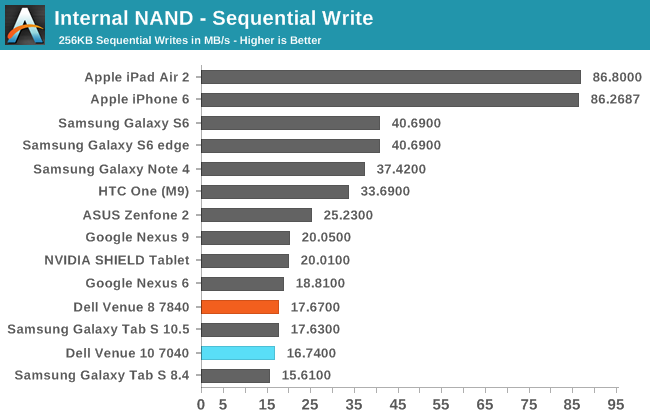
In three of our four tests, the Venue 10 performs roughly as well as the Venue 8, which makes it a fairly average performer. Sequential writes could definitely be improved, but they don't lag far behind other Android tablets like the Nexus 9 or SHIELD Tablet. However, the sequential read speeds are very concerning. 58.48Mbps makes it the second slowest device on the chart, and the only slower device is the Nexus 6 which is crippled by the use of disk encryption.










49 Comments
View All Comments
tsk2k - Tuesday, June 30, 2015 - link
When is the Carrizo review coming out?DigitalFreak - Tuesday, June 30, 2015 - link
I'll save you 8 pages of reading.It sucks.
Hulk - Wednesday, July 1, 2015 - link
Thanks you just saved me 15 minutes. And I'm being totally serious.kyuu - Thursday, July 2, 2015 - link
Can you and the other members of the AMD-hate circle jerk kindly stop infesting the comment section here? Anandtech is a site for people who want to read about tech, not indulge in mindless dickery. Thanks.maglito - Monday, July 6, 2015 - link
Probably when you can actually get a carrizo powered laptop / 2in1. Have you seen any for sale yet? I haven't, and I've been looking. I really want a laptop with 18Gbps HDMI (2.0) and hardware H.265 decode. They were supposed to be available by now....nightbringer57 - Tuesday, June 30, 2015 - link
About the 2 in 1 aspect...I feel the problem of this market niche is the harsh competition from windows 8.1 (soon to be 10) "Tabletbooks" (2 - 1 tablet + netbook devices like the asus T100). Those are really common and you can get very good models around 200-300€. You can really put the keyboard to full use with the (almost) full-fledged Windows compatibility. If you're gonna buy a not-so-good tablet just because it can make an awesome netbook when you need it, those models kick in and ass.
JeremyInNZ - Tuesday, June 30, 2015 - link
The Sony Z4 tablet is arguably the best 10" Android tablet on the market. It also comes with a keyboard doc, and does a much better job then the Dell with it. Just because Dell did a poor job of implementing the idea, does not make it a bad idea.zimanodenea - Tuesday, June 30, 2015 - link
Intel + PowerVR. I'd rather eat dog poop than buy into this combination again.lilmoe - Tuesday, June 30, 2015 - link
What were you expecting? We all know that last generation ATOM's iGPUs suck (and the current x7 sucks a little less). Wait for a $499 Core M tablet if you want something "interesting", and make sure it doesn't go above 1080p if you want 10+ hours of battery life...Samus - Wednesday, July 1, 2015 - link
The elephant in the room here is that this is a $500 Android tablet. $500. Starting price. If it were running Windows this would be a legitimate competitor to the Surface 3.The reality is you can buy two really decent Android tablets for the same price as this, specifically the Asus Transformer. This is basically a $200 Nextbook Ares (includes keyboard) for triple the price. I don't know what Dell is doing here. Covering something in Aluminum doesn't triple its value.